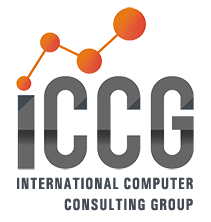As a long-time professional in cloud solutions, I can sometimes be struck by how uniform the information, discussion and debate is about the differences in cloud in the IT industry, whether from journalists, analysts or industry colleagues. Usually speaking in sweeping terms about the cloud and making everything from inaccurate statements to generalizing conclusions based on the cloud description. In this blog post, I want to help you understand the differences in clouds in relation to ERP solutions. It's all about the level of responsibility, agility and security.
Why You Should Care About The Different Cloud Solutions
Topics: ERP, Distribution, Supply Chain, Warehouse Management Systems, Supply Chain Network, Cloud BI, Enterprise Asset Management, CloudSuite, Enterprise Software, WMS
Migrating Your Warehouse From Cost Center To Competitive Differentiator
Many organizations tend to view warehouse operations as cost centers due to the labor, equipment, and physical inventory. However, with business models rapidly changing through e-commerce, omnichannel, curbside pickup, 3D printing, and more, warehouse operations empower a company to gain a competitive advantage by ensuring customer loyalty and brand excellence stay intact as products enter the last mile.
Common warehousing challenges
Warehouse directors understand the challenges most, if not all, distribution centers manage. These challenges cover a wide range of issues which include picking optimization, inventory management, operational strategy, employee management, returns, and much, much more.
Picking challenges
For example, a large amount of productivity is often lost due to insufficient item master data. Poor inventory placement across the warehouse can result in increased costs and reduced productivity without the correct item and location slotting for concepts such as seasonality, promotional activities, and sales projections.
Furthermore, many companies lack visibility into inventory quantity and location accuracy due to a heavy reliance on spreadsheets, pick sheets, the absence of cycle counts, capacity constraints, or a lack of digital monitoring together. No visibility into inventory quantities or throughput can result in declining fulfillment rates, stockouts & backorders, decreased service levels, and waning customer loyalty and sales opportunities.
Topics: ERP, Distribution, Supply Chain, Warehouse Management Systems, Supply Chain Network, Cloud BI, Enterprise Asset Management, Enterprise Software, WMS
Importance Of Cloud-Based Warehouse Management
Even when your warehouse operations appear to be running smoothly, change and disruption are constant battles that supply chains must fight. Black swan events, emerging technology, new regulations, and shifts in consumer demand have created an increased need for “always up-to-date” functionality. While steps can be taken to mitigate risk, when changes occur it’s still up to you and your team to adjust and ensure new warehouse capabilities are implemented quickly.
If your organization previously reviewed, dismissed, or put off moving your WMS to the cloud, it’s time to reevaluate. Decisions that seemed to make sense last year or even last quarter, likely look very different through today’s lens. With business models drastically changing and uncertainty lingering in every corner, what if you could offload critical IT responsibility to an organization you trust to manage it all for you?
Topics: ERP, Supply Chain, Warehouse Management Systems, Product Lifecycle Management, Infor M3 ERP, Enterprise Software, WMS, Supply Chain Management
The urgency of data security and privacy can’t be overstated. In 2021, the global average cost of a data breach was $4.24 million, representing a 9.8% increase over 2020. Yet the immediate costs are a trifle when compared to the incalculable, lasting brand, reputation, and business damage that a data security incident causes.
Understanding the present threat
Risks associated with information security threats increase minute by minute. Bad actors with malicious intent are continuously evolving their strategies and attempting increasingly creative and sophisticated security breaches. The constant potential threat of cyberattacks and security breaches can be taxing on IT teams and organizations that need vigilance, resources, talent, and educational resources just to stay ahead.
The number of potential attackers is also expanding to include not only independent attackers and small groups, but also state-sponsored hacking organizations that are much better organized and funded. These larger groups can afford to devote multiple resources to breaching the defenses of small and large organizations over a long period of time—a level of commitment attackers once reserved only for the most strategic targets.
Topics: Manufacturing, Distribution, Supply Chain, Warehouse Management Systems, Enterprise Software, Security & Compliance, WMS, Supply Chain Management
Supply Chain Digitization Is No Longer Optional, Here's Why.
In a data-driven world, navigating the challenges of today’s supply chains requires an unprecedented level of agility. This calls for supply chain tools that deliver network-wide trading partner connectivity to enable real-time visibility, demand and supply planning, and production scheduling insights.
Fortunately, modern tools deployed in an organization’s technology stack can digitally transform the supply chain, revealing new opportunities for innovation across the entire network.
At the same time, automation and advanced analytics delivered in a digital environment can synchronize production and distribution activities to match demand.
Topics: Manufacturing, Distribution, Supply Chain, Warehouse Management Systems, Enterprise Software, WMS, Supply Chain Management
Overcoming Customer Demand With Warehouse Management
Rising costs, increasing complexity, growing customer demands, and expanding global supply chains are all intrinsically linked challenges that manufacturers and distributors face on a daily basis. Meanwhile, expanding omni-channel markets are forcing manufacturers and distributors to not only change how they sell to customers, but also redefine who their customers are. And customers are exerting even further
pressure with demands for customization and personalization of products.
Global expansion adds to the challenge of maintaining visibility into inventory, shipping, and tracking—often across borders, continents, and oceans. In addition to making sophisticated warehouse operations even more complex, this all makes it difficult for manufacturers and distributors to remain competitive, keep costs down, and maintain profitability. Ineffective order management, excessive labor costs, and inefficient asset use just exacerbate the problem. To tackle these challenges, manufacturers and distributors must reconsider how their warehouse management practices, processes, and systems need to change in order to improve warehouse productivity, visibility, and costs.
Topics: Manufacturing, Distribution, Warehouse Management Systems, Enterprise Software, WMS
Boost Your Performance With Cloud-Based Warehouse Management
When companies rely on a dated warehouse management system (WMS) to run their distribution centers, it’s not uncommon with the IT staff familiar with the system to move on. Unfortunately, this leaves the company without an in-house expert to manage issues as they arise. Plus, if the original vendor is no longer supporting that version of the system, it can be incredibly difficult to get the system back up and running.
Over time, each organization builds the distribution ecosystem that uniquely addresses its needs. The challenge emerges when only a handful of people understand how to manage and maintain that system successfully and perhaps only one individual truly understands the complete picture. With a mission critical WMS and corresponding data at the very core of the business, any scenario that puts it at risk is can be detrimental to getting products out the door.
Topics: ERP, Distribution, Supply Chain, Warehouse Management Systems, Supply Chain Network, Cloud BI, Enterprise Asset Management, Enterprise Software, WMS
Enabling Continuous Supply Chain To Enhance Your Planning Capabilities
The future of planning is connected, intelligent, and continuous. Yet many companies remain so far away from this vision, it often seems unachievable. With many planning processes being so siloed and disconnected from execution, they can feel ineffective.
Fortunately, evaluations of the planning landscape reveal many organizations are adopting technologies that move towards a de-siloed, network-based approach to planning. For these companies, the primary goal centers around connecting planning capabilities to “a single version of the truth.” To optimize planning capabilities, it crucial to achieve this connection at the enterprise level as well as into the broader supply network.
But to do this involves using integrated business planning (IBP) or sales and operations planning (S&OP) to collaborate and analyze, perform demand planning to improve forecasting, optimize supply planning, and facilitate synchronization. Each of these areas are critical to a successful planning process and are more powerful when integrated and connected across a network.
Topics: Manufacturing, Distribution, Supply Chain, Warehouse Management Systems, Enterprise Software, WMS, Supply Chain Management
Four Key Steps for Navigating Supply Chain Disruption
Supply chain disruptions caused by black swan events are by nature unforeseeable events that can be utterly catastrophic. Due to their destructive potential, these unfortunate events justifiably draw attention to how critical supply chains are to sustaining business success and essential daily functions. Unfortunately, they also draw attention to how vulnerable supply chains tend to be when faced with sudden adversity.
Studying the kinds of companies that can weather such catastrophes provides many key lessons about how enterprises can implement resiliency solutions and strategies to respond to, and mitigate, the deleterious effects of a black swan event.
There are four key steps enterprises can adopt to ensure that they are able to respond and react with the flexibility needed to minimize the impacts of black swan events and the “ripple” of disruption occurring at numerous levels of magnitude.
Topics: Manufacturing, Distribution, Supply Chain, Warehouse Management Systems, Enterprise Software, WMS, Supply Chain Management
Creating A Functionally Integrated Supply Chain.
The competitive landscape of the wholesale distribution industry is fiercer than ever before. With brand-new, internet-based distributors of all sizes seemingly popping up as quickly as mergers and acquisitions are building new distribution powerhouses, the competition just keeps getting more intense. Adding to the mix are an increasing number of manufacturing companies that are selling direct to retailers and offering online shopping options for consumers, bypassing distribution companies entirely. And let’s not forget the impact big box stores and e-tailers can have on the distribution channel as they leverage their purchasing power, large retail networks, and extensive B2C experience.
Of course, no discussion about distribution competition is complete without addressing the elephant in the room, Amazon® Business. With the ability to sell millions of SKUs with flexible shipping options at low price points, Amazon is setting a high bar for customer expectations. Amazon is very good at responding to how buyers buy today by offering a powerful customer experience that uses modern technologies, such as artificial intelligence (A.I.) and data science.
Topics: Manufacturing, Distribution, Supply Chain, Warehouse Management Systems, Enterprise Software, WMS, Supply Chain Management


.jpg)








